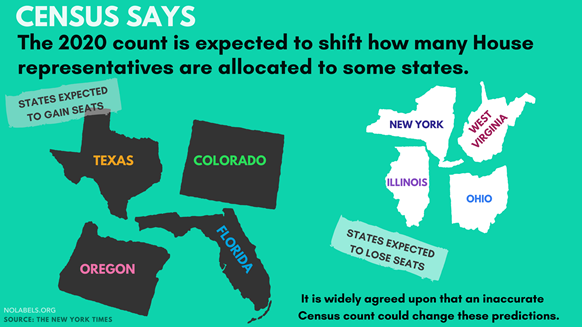Five Facts You Need to Know About the US Census

Article I, Section 2 of the U.S. Constitution mandates that a census of the population be taken every 10 years. Following this requirement, the number of residents living in the country has been counted every decade since 1790, primarily to apportion members of the House of Representatives to each state based on their populations. These decennial projects are a tremendous undertaking; the 2010 Census counted close to 309 million residents.
Last month, the 2020 Census was thrust into the spotlight when the U.S. Commerce Department announced it would ask residents a question about their citizenship status. According to Commerce Secretary Wilbur Ross, collecting such data has been “a longstanding historical practice.” Yet, some Democrats have vocally opposed the shift, saying it could lead to undocumented immigrants’ not filling out the survey.
Here are five facts you need to know about the U.S. Census and the current controversy surrounding it:
1. The 2020 Census will be the first time a question about citizenship has been asked of every resident since 1950. According to NPR, the 1950 Census asked where a person was born and, as a follow-up question, if a foreign-born person was naturalized. While the citizenship question was taken off of the short-form version of the Census — which is the mostly widely distributed version — after this date, it remained on the long-form version until 2010. That year, there was no long-form survey, having been replaced by the American Community Survey (ACS). The ACS is an ongoing survey of population changes sent to a small percentage of residents annually.
2. However, this is far from the first time changes have been made to the U.S. Census. The Census questionnaire has undergone a number of radical transformations since first enacted over two centuries ago. The History Channel reports that the first Census had three citizenship categories: free white males and females, all other free persons, and slaves. “Hindu” was a category for three decades, but no longer is. “Koreans” was taken out of the questionnaire in 1950, only to be reinstated 20 years later. According to The History Channel, the most recent major change happened in 2000, when citizens could identify as more than one race for the first time.

3. The 2020 count is expected to shift how many House representatives are allocated to some states. The New York Times highlights that, after this upcoming Census, states including Texas, Colorado, Florida, and Oregon are expected to gain seats, while New York, West Virginia, Ohio, and Illinois are expected to lose them. It is widely agreed upon that an inaccurate Census count could change these predictions.
4. Many states are attempting to stop the Trump administration from including the immigration status question in the Census. As of March 27, 12 states have indicated they will sue to prevent this question from being asked, including New York, Connecticut, Delaware, Illinois, Massachusetts, New Jersey, New Mexico, Oregon, Pennsylvania, Rhode Island, Washington, and California. And more than 160 mayors have voiced their opposition to this change.
5. The White House has ardently defended this question. According to White House spokesperson Sarah Huckabee Sanders, the immigration question is “necessary for the Department of Justice to protect voters and specifically help [them] better comply with the Voting Rights Act.”
No Labels is an organization of Democrats, Republicans, and independents working to bring American leaders together to solve problems.




